The Rain Bird ESP-M Controller is a versatile, modular irrigation system designed for residential and commercial use, offering advanced features like smart watering and flexible scheduling.
Overview of the ESP-M Series
The Rain Bird ESP-M Series is a line of advanced, modular controllers designed for efficient irrigation management. Available in various models, including the ESP-Me and ESP-Me3, these controllers offer flexibility and scalability for residential and commercial landscapes. Known for their user-friendly interfaces and robust features, the ESP-M Series supports smart watering technologies, remote access via WiFi modules, and seamless integration with sensors and valves. The series is backed by comprehensive user manuals and guides, ensuring easy installation, programming, and maintenance. Whether for small gardens or large-scale systems, the ESP-M Series delivers reliable and customizable irrigation solutions.
Key Features and Benefits
The Rain Bird ESP-M Series boasts an array of features, including a modular design for system expansion, smart watering technology, and compatibility with various sensors. Users benefit from advanced scheduling options, manual override capabilities, and energy-efficient operation. The controllers offer remote access via WiFi modules, allowing users to manage their irrigation systems from smartphones. Additionally, the ESP-M Series integrates seamlessly with soil moisture and rain sensors, ensuring optimal water usage. These features combine to provide a reliable, efficient, and customizable irrigation solution for diverse landscapes, enhancing water conservation and system performance.
Compatibility with Other Rain Bird Products
The Rain Bird ESP-M Controller seamlessly integrates with a wide range of Rain Bird products, including sensors, solenoids, and modular accessories. It works effortlessly with Rain Bird’s WiFi LNK modules for remote smartphone access and is compatible with the company’s advanced soil moisture sensors and rain sensors. This compatibility ensures optimal performance and water efficiency by allowing the system to adapt to environmental conditions. The ESP-M Series also supports integration with other Rain Bird irrigation components, such as the popular Rotor 3500 sprinklers, making it a versatile choice for various irrigation setups and ensuring a cohesive, high-performing system.
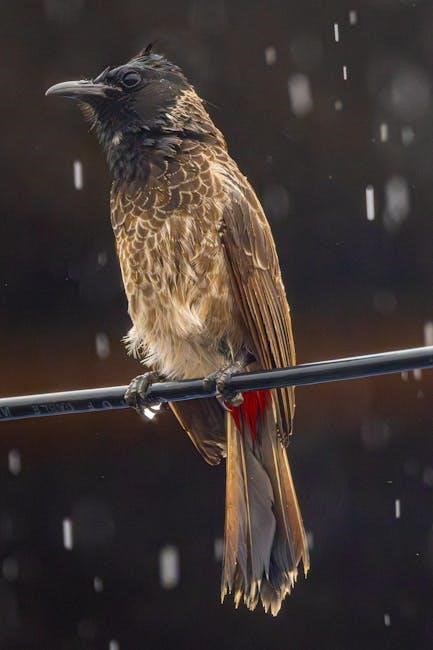
Installation and Setup
Mount the controller indoors or outdoors, connect sensors and valves, then power on and configure basic settings like time and date for initial operation.
Unpacking and Preparing the Controller
Start by carefully unboxing the Rain Bird ESP-M controller and inspecting for any damage. Ensure all components, including the controller, power cord, and mounting hardware, are included. Before installation, locate a suitable area for mounting, ensuring it is dry, secure, and accessible. Read the manual to familiarize yourself with the layout and functions. Prepare the controller by setting the clock and date, and ensure the battery is installed for memory backup. Handle the device gently to avoid damage to the LCD screen or internal components.
Mounting the Controller Indoors or Outdoors
Mount the Rain Bird ESP-M controller on a flat, dry surface, either indoors or outdoors, using the provided mounting hardware. For indoor installation, choose a location near the sprinkler system and power source. Outdoors, ensure the controller is protected from direct sunlight and moisture; consider using a weather-resistant enclosure. Secure the controller firmly to the wall or surface to prevent vibration or movement. Ensure the area is accessible for future adjustments or maintenance. Follow the manual’s guidelines to avoid damage and ensure proper functionality in any environment.
Connecting Sensors and Valves

To ensure proper irrigation system operation, connect compatible sensors and valves to the Rain Bird ESP-M controller. Start by attaching rain sensors to the designated terminals, which help prevent overwatering during rainfall. Soil moisture sensors can also be connected to optimize watering based on soil conditions. For valves, use the controller’s valve terminals to link solenoid valves, ensuring each zone operates correctly. Secure all wire connections tightly to avoid corrosion or signal loss. Test the connections by manually activating zones to confirm proper functionality. Proper setup ensures reliable operation and efficient watering. Use waterproof connectors for outdoor installations to protect against moisture damage. Labeling wires can simplify future maintenance and troubleshooting. Always refer to the manual for specific wiring diagrams and recommendations to ensure compatibility and safety. Regularly inspect connections to prevent wear and tear, and replace any damaged wires promptly. This careful setup guarantees optimal performance and longevity of your irrigation system.
Powering On and Initial Configuration
After connecting all sensors and valves, power on the Rain Bird ESP-M controller by plugging it into a suitable electrical outlet. The LCD display will illuminate, and the controller will enter setup mode. Use the keypad to set the current date, time, and watering day. Navigate through the menu to configure basic settings like watering schedules and valve assignments. Ensure all zones are tested to confirm proper operation. Save your preferences to avoid losing configuration during power outages. The controller is now ready to manage your irrigation system efficiently. Refer to the manual for detailed step-by-step guidance.
Programming and Customization
The Rain Bird ESP-M offers flexible programming options, allowing users to customize watering schedules, adjust run times, and utilize manual overrides for efficient irrigation management.
Setting Up Watering Schedules
Setting up watering schedules on the Rain Bird ESP-M is straightforward. Users can program multiple start times and select specific days of the week for irrigation. The controller allows for flexibility, enabling schedules to run daily, every other day, or on custom days. Watering times can be set for different zones, ensuring each area of the lawn or garden receives the right amount of water. The ESP-M also supports seasonal adjustments, allowing users to adapt watering durations based on changing weather conditions. This feature ensures efficient water use while maintaining healthy landscapes year-round.
Adjusting Run Times and Frequencies
Adjusting run times and frequencies on the Rain Bird ESP-M allows for precise control over watering durations and intervals. Users can modify run times in minutes and set frequencies to match plant needs. The keypad enables easy navigation to the settings menu, where individual zones can be adjusted. Arrows are used to increase or decrease values. Regular adjustments ensure optimal watering based on weather and soil conditions. This customization promotes water conservation and healthier plants by preventing overwatering or underwatering. Adjusting these settings is essential for maintaining efficient irrigation practices throughout the growing season.
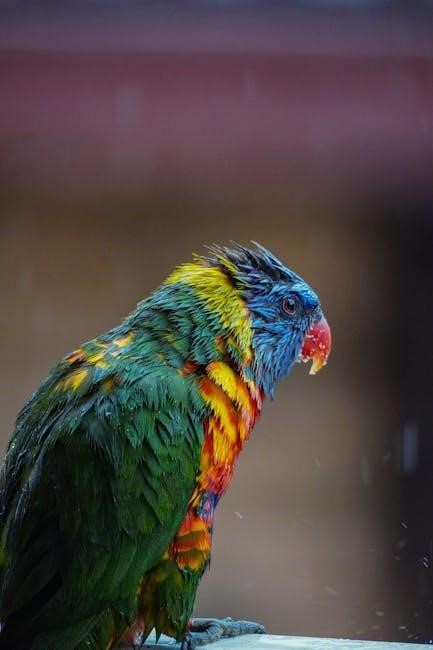
Using the Manual Override Feature
The manual override feature on the Rain Bird ESP-M allows users to run irrigation zones outside of the programmed schedule. This is useful for addressing immediate watering needs without altering the main program. To access the override, press the Manual button on the keypad. Select the desired zone or choose All Zones to water everything. Use the arrow keys to set the run time in minutes. Press Start to begin watering. The override will stop automatically after the set time. This feature is handy for quick adjustments without disrupting the programmed watering schedule.
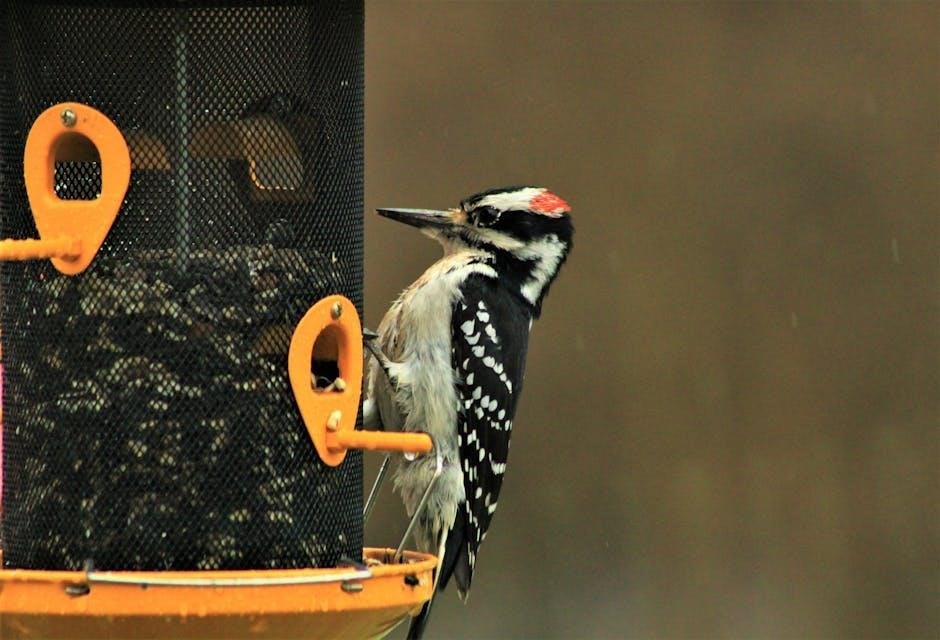
Advanced Settings for Optimal Watering

The Rain Bird ESP-M offers advanced settings to fine-tune irrigation for specific landscape needs. Users can adjust water budgets to increase or decrease watering percentages based on weather conditions. The controller also supports soil moisture sensor integration, ensuring irrigation only occurs when necessary. Additional features include customizable watering windows and cycle-and-soak settings to prevent runoff on sloped areas. These advanced options allow for precise water management, promoting healthy plant growth while conserving water. By leveraging these settings, users can optimize irrigation schedules for varying soil types, plant species, and local climate conditions.

Understanding the User Interface
The Rain Bird ESP-M features an intuitive LCD display showing real-time status and menu options. The keypad enables quick navigation and adjustments, ensuring easy access to all settings.
Navigating the LCD Display
The Rain Bird ESP-M controller features a backlit LCD display that provides clear, menu-driven navigation. Users can scroll through options like current time, watering schedules, sensor status, and advanced settings. The display shows active zones, run times, and system status. Use the navigation arrows to move left, right, up, or down through menus. The center button selects options, while pressing it again returns to the previous screen. This intuitive design ensures easy access to all functions, allowing for quick adjustments and monitoring of the irrigation system. The display also automatically dims to conserve power when not in use.
Interpreting Status Indicators and Symbols
The Rain Bird ESP-M controller uses status indicators and symbols to convey system information. The LCD display shows icons for active zones, water budgets, and sensor status. A checkmark indicates successful operation, while an ‘X’ signals an issue, such as a valve malfunction or sensor problem. A watering can icon appears during irrigation cycles. The raindrop symbol indicates rain sensor activation, and a sun icon shows solar synchronization. These visual cues help users quickly assess system status and address issues. Familiarizing yourself with these symbols enhances monitoring and troubleshooting efficiency, ensuring optimal irrigation performance. Always refer to the manual for detailed explanations of each symbol to prevent misinterpretation and ensure proper system maintenance and operation. This clear communication helps users make informed decisions and maintain their irrigation system effectively. By understanding these indicators, users can resolve issues promptly and keep their system running smoothly. Regular checks of these symbols can prevent potential problems and ensure water is used efficiently. Additionally, knowing what each symbol means allows users to take appropriate actions, whether adjusting settings or performing maintenance tasks. This feature-rich interface is designed to make managing the irrigation system straightforward and user-friendly, even for those less experienced with such technology. Overall, the status indicators and symbols are essential tools for effective system management and troubleshooting, providing valuable insights at a glance. They play a crucial role in maintaining the health and efficiency of the irrigation system, ensuring it operates as intended and conserves water where possible. By leveraging these visual cues, users can enjoy a well-maintained landscape with minimal effort and maximum efficiency. The intuitive design of the ESP-M controller’s interface ensures that even complex operations are simplified, making it accessible to a wide range of users. In summary, understanding and interpreting the status indicators and symbols on the Rain Bird ESP-M controller is vital for its effective use and maintenance, enabling users to make informed decisions and keep their irrigation system running optimally.
Using the Keypad for Quick Adjustments
The Rain Bird ESP-M controller’s keypad enables quick adjustments for efficient irrigation management. To navigate, use the arrow keys to scroll through menu options and press the center button to select. For immediate changes, such as adjusting zone watering times, select the desired zone and use the arrows to modify the duration. Press the center button to save. Access manual mode by pressing and holding a button for a few seconds to initiate immediate watering. For advanced settings, press a button combination to unlock the menu. Resetting involves holding the power button, but be cautious as it resets to factory settings. Check system status by cycling through options with button presses. This keypad simplifies adjustments, saving time and enhancing convenience for lawn care.
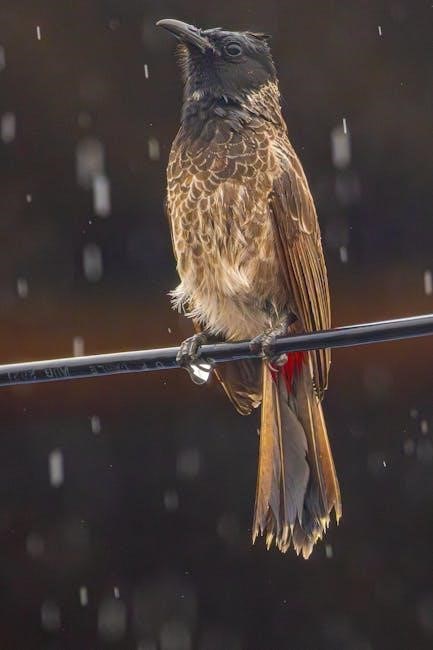
Water Conservation and Efficiency
The Rain Bird ESP-M promotes water conservation through smart technology that adjusts watering based on weather, soil conditions, and plant needs, ensuring efficient use of resources.
Smart Watering Technology Explained
Smart Watering Technology in the Rain Bird ESP-M adjusts watering schedules based on real-time data from sensors, ensuring water is used efficiently. It considers soil moisture, temperature, and humidity levels to prevent overwatering. This technology integrates with rain and soil sensors to pause watering during rain or when soil is saturated, reducing waste. By optimizing water application, it promotes healthier plants and lowers water bills. The ESP-M’s smart algorithms learn and adapt to site conditions, making it a robust solution for water conservation and landscape health.
Using Rain Sensors for Optimal Water Use
Rain sensors are essential for optimizing water use with the Rain Bird ESP-M. These sensors detect rainfall and signal the controller to pause irrigation during or after rain, preventing overwatering. The ESP-M seamlessly integrates with wired or wireless rain sensors, ensuring water is applied only when needed. This feature not only conserves water but also protects plants from excessive moisture. By connecting a rain sensor, the system automatically adjusts watering schedules based on precipitation, enhancing efficiency and reliability. This integration ensures your irrigation system operates in harmony with nature, promoting water conservation and healthier landscapes.
Soil Moisture Sensors Integration
The Rain Bird ESP-M supports soil moisture sensor integration to further enhance watering efficiency. These sensors monitor soil conditions and provide real-time data to the controller. By connecting a soil moisture sensor, the ESP-M can automatically adjust irrigation schedules based on actual soil conditions, ensuring water is applied only when necessary. This prevents overwatering and promotes healthy plant growth. The system allows for seamless integration with compatible sensors, offering customizable thresholds to match specific soil types and plant needs. This advanced feature maximizes water savings while maintaining optimal soil moisture levels for vibrant landscapes.
Maintenance and Troubleshooting
Regularly clean the controller’s display and check for worn-out parts. Troubleshoot issues like faulty sensors or wiring problems by consulting the manual or contacting support.
Regular Maintenance Tips
Regular maintenance ensures optimal performance of the Rain Bird ESP-M controller. Clean the display regularly to maintain visibility. Inspect and replace any worn-out parts promptly. Keep the controller’s firmware updated for the latest features and security patches. Clean solenoids to prevent dirt buildup that could interfere with valve operation. Check wiring connections for looseness or corrosion and secure or replace them as needed. Inspect and clean system filters to ensure proper water flow. After performing maintenance, test the system to verify all functions are working correctly. Always refer to the manual for specific guidance and troubleshooting steps.
Common Issues and Solutions
Common issues with the Rain Bird ESP-M controller include the system not turning on, incorrect watering times, or stations failing to activate. Check the power source and circuit breaker if the controller doesn’t power up. For display issues, reset the controller by unplugging it for 10 seconds. If watering times are incorrect, verify the schedule settings. Stations not activating may indicate faulty solenoids or wiring issues. Clean or replace solenoids and ensure wires are securely connected. If sensors are not functioning, ensure they are properly installed and free from debris. Restarting the controller often resolves temporary glitches.
Updating Firmware for Enhanced Performance
Updating the firmware on your Rain Bird ESP-M controller ensures optimal performance and access to the latest features. Check the current firmware version on the controller’s display. Visit the Rain Bird website to download the newest firmware version. Transfer the update to the controller using a USB drive or the WiFi module for wireless updates. Follow the on-screen instructions to complete the update process. Regular firmware updates improve functionality, resolve bugs, and enhance compatibility with other devices. Always back up your settings before updating to avoid losing custom configurations.

Advanced Features and Upgrades
The Rain Bird ESP-M controller supports advanced features like WiFi connectivity, smart home integration, and system expansion with additional modules for enhanced irrigation management.
WiFi Module Integration for Remote Access
The Rain Bird ESP-M controller can be enhanced with a WiFi module, enabling remote access and control via mobile devices. This feature allows users to manage irrigation schedules, monitor system status, and receive notifications from anywhere. The module seamlessly integrates with the Rain Bird app, offering a user-friendly interface for adjustments. Installation is straightforward, and the module ensures secure connectivity. This upgrade is ideal for homeowners seeking convenience and efficiency in their irrigation system. It also supports water conservation by allowing real-time adjustments based on weather conditions or unexpected issues.
Expanding the System with Additional Modules
The Rain Bird ESP-M controller supports expansion through additional modules, allowing users to customize their irrigation system. Modules such as extra station outputs, sensor inputs, or advanced control options can be added to meet specific needs. These modules are designed for seamless integration, ensuring compatibility and ease of installation. By expanding the system, users can enhance functionality, improve efficiency, and adapt to larger or more complex landscapes. This flexibility makes the ESP-M controller a scalable solution for both residential and commercial applications, catering to diverse irrigation requirements.
Integrating with Smart Home Systems
The Rain Bird ESP-M controller can seamlessly integrate with popular smart home systems, enhancing convenience and automation. By connecting to platforms like Amazon Alexa or Google Home, users can control irrigation schedules, monitor system status, and receive notifications through voice commands or smartphone apps. This integration allows for a unified smart home experience, ensuring optimal watering management alongside other smart devices. Compatibility with these systems enables advanced automation, improving efficiency and reducing manual intervention. This feature makes the ESP-M controller a versatile and modern solution for smart home enthusiasts, perfect for integrating into their existing ecosystems.
The Rain Bird ESP-M controller offers a powerful, flexible, and efficient irrigation solution. Its advanced features and user-friendly design make it ideal for both residential and commercial use.

Final Thoughts on the ESP-M Controller
The Rain Bird ESP-M controller is a highly efficient and versatile irrigation system, perfect for modern landscaping needs. Its advanced features, such as smart watering technology and sensor compatibility, ensure optimal water conservation. With its user-friendly interface and customizable settings, it caters to both residential and commercial users. The ESP-M stands out for its reliability and adaptability, making it a top choice for those seeking a durable and intelligent irrigation solution. Its ability to integrate with additional modules and smart home systems further enhances its value, ensuring long-term satisfaction and performance.
Resources for Further Learning
For deeper understanding, refer to the official Rain Bird ESP-M manual available on their website. Additional resources include instructional videos on YouTube and detailed guides on the Rain Bird support page. Explore forums like LawnSite or Irrigation-Forum for user discussions and troubleshooting tips. The Rain Bird website also offers FAQs, technical specs, and software updates. These resources provide comprehensive insights, helping you maximize the controller’s potential and ensure optimal performance.
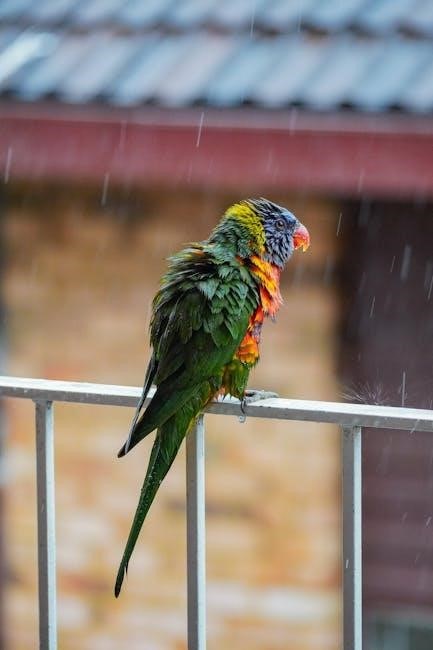
Leave a Reply
You must be logged in to post a comment.